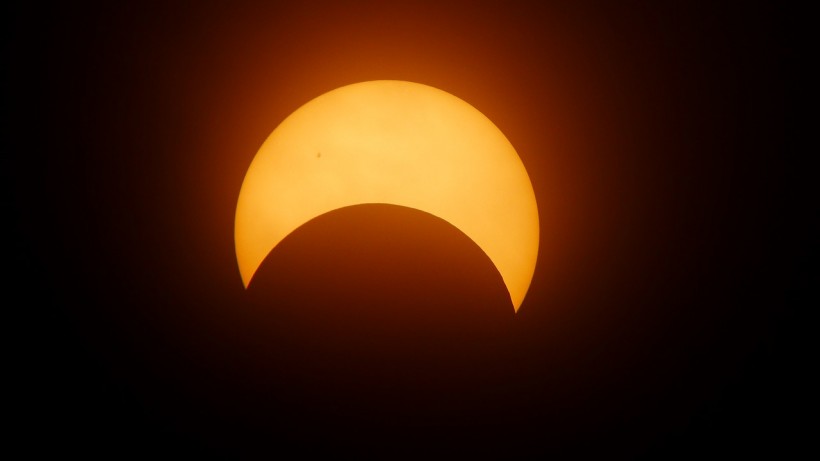A solar eclipse on Earth means that the Moon is blocking the light from the Sun and casts a shadow on the planet. NASA said that there are three types of solar eclipse: total, partial, and annular solar eclipse. But if this natural phenomenon happens on Earth, is it also possible on Mars?
NASA said that it is, although solar eclipse on the Red Planet is different from Earth. The space agency's Mars rovers Opportunity, Curiosity, and now Perseverance have captured what a solar eclipse is like on the Red Planet. Read on to learn how it differs from the one humans see on Earth.

NASA Videos on Mars Show What Solar Eclipse Looks Like on the Red Planet
Mars Solar Eclipse
Mars has two moons, namely Phobos and Deimos, that orbit the planet every 7.65 and 30.35 hours respectively. They are smaller and lumpier than the Moon.
According to Science Alert, Mars solar eclipses are actually not eclipses but rather transits that never entirely block out the sunlight. The Red Planet's lumpy moonlets pass between the Sun and observers on the Martian surface show that they do not completely cover the Sun as they could if viewed on Earth.
The Mars InSight lander, which measures seismic activity on Mars, experiences a slight tilt during these events. Scientists believe that the deformation on the Martian surface due to the slight cooling effect from the reduced solar radiation could explain it.
During these transits, Phobos has the larger silhouette and blocks as much as 40% of sunlight, while Deimos is farther and smaller and blots out less light. It is unlike here on Earth in which the Moon could cover the disk of the Sun despite being 400 times smaller.
Observing solar and lunar eclipses teaches humans cool things about the Sun and the natural satellite that orbits the planet. On Mars, a solar eclipse is also interesting because scientists can learn new things about the planet and its moons. They can link Phobos to the gravitational effect on the Red Planet and use that information to study its interior.
Also, it could help them predict the future of Phobos, which seems to be moving closer and closer to Mars. Scientists predict that it will grow so near to Mars that it will pull the gravity on the planet apart.
ALSO READ: NASA Captures Solar Eclipse Visible Only on Solar Dynamics Observatory From Space
Perseverance Mars Rover Recording Solar Eclipses on the Red Planet
In April this year, Perseverance rover's Mastcam-Z camera system shot a video of Phobos eclipsing the Sun. NASA said that it is the most zoomed-in and highest frame-rate observation yet of Photos solar eclipse as viewed from the Martian surface.
Rachel Howson of Malin Space Science Systems in San Diego and one of the scientists who operate the Mastcam-Z camera system said that she was not expecting the video to be that amazing despite expecting the footage to be good.
Before the Perseverance rover, several Mars rovers have observed the solar eclipse on Mars for the past 18 years. The first time-lapse photos of Phobos eclipsing the Sun were captured in 2004 by Spirit and Opportunity Mars rovers. Also, Curiosity was the first to record the video of the Mars solar eclipse.
These solar eclipses allow scientists to measure subtle shifts in the orbit of Phobos over time. The moon is responsible for the tidal forces deep within Mars, and also its crust and mantle.
RELATED ARTICLE: NASA Mars Perseverance Rover Captures Stunning Solar Eclipse in the Red Planet [Look]
Check out more news and information on Space in Science Times.














